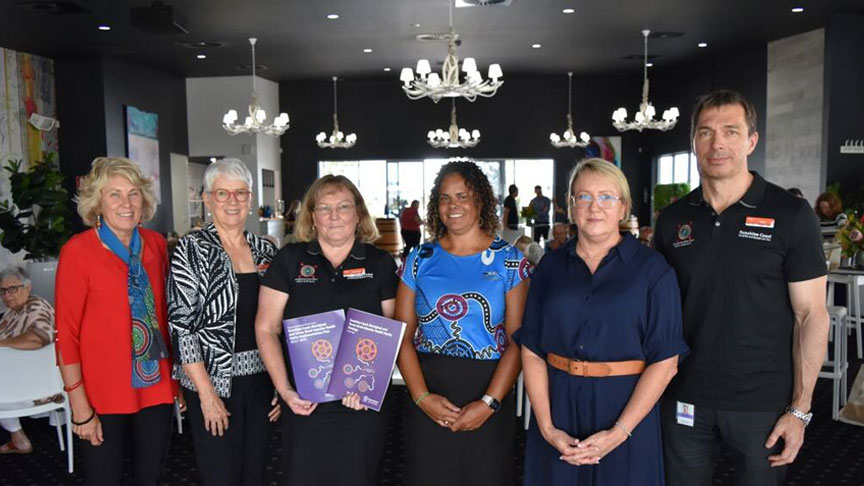
A new strategy has been released to help improve health outcomes for local Aboriginal and Torres Strait Islander people by providing culturally responsive, sustainable, and effective healthcare.
The Sunshine Coast Aboriginal and Torres Strait Islander Health Equity Strategy (2022-2025) focuses on long term changes that address structural and systemic inequities.
The Implementation Plan (2022-2025) outlines the actions required to operationalise the strategy and how to measure success.
Sunshine Coast Hospital and Health Service (SCHHS) Chief Executive Peter Gillies said the purpose is to advance health equity and achieve life parity for Aboriginal and Torres Strait Islander people by 2031.
“The strategy includes eliminating racial discrimination, increasing access to healthcare, recruiting a culturally diverse and confident workforce, providing culturally safe and responsive healthcare, working with Aboriginal and Torres Strait Islander communities and organisations to deliver and monitor health services and addressing the leading drivers of the health gap,” Dr Gillies said.
The Aboriginal and Torres Strait Islander population in the SCHHS is upwards of 12,000 people, and almost half are aged 20 years or under.
Aboriginal and Torres Strait Islander people are overrepresented in various conditions causing potentially preventable hospitalisations including ear, nose and throat infections, convulsions, and asthma.
As noted in the Queensland Closing the Gap (CTG) Snapshot Report Card (2019) the life expectancy gap for Aboriginal and Torres Strait Islander males was 7.8 years and females 6.7 years, with the child mortality rate 1.7 times higher than that of non-Aboriginal and Torres Strait Islander people living in Queensland.
SCHHS Service Director of Aboriginal and Torres Strait Islander Health Sharon Barry said throughout the consultation process one very clear message was shared between all stakeholders, community, and our Elders - if we want to effect lasting change, we must all work together as a cohesive unit.
“While there are dedicated programs that offer culturally appropriate services for the local Aboriginal and Torres Strait Islander community, these services are unable to support the growing population of 12,000 people on their own. For this reason, it is important all services and programs within the region are empowered to support, understand, and acknowledge Aboriginal and Torres Strait Islander cultures,” Ms Barry said.
“Together, with a shared vision we have the power to encourage growth from ourselves and others, advocate for those who may not have a voice and be part of a bigger dream. That dream is to achieve health equity so all consumers can access services that understand and support them to be healthier.”
The Strategy and the Implementation Plan are co-designed, co-owned and co-implemented between the Aboriginal and Torres Strait Islander people, North Coast Aboriginal Corporation for Community Health, Central Queensland Wide Bay Sunshine Coast PHN and Sunshine Coast Hospital and Health Service.